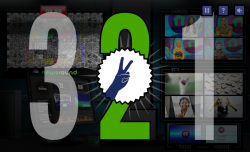Newsround: Reporter Rush
Sunday, June 9th, 2013 Command a team of reporters, directors and camera operators across the globe in this time-management game. Test out your multitasking skills to see how fast you can collect the news. Built for the awesome Aardman Digital and the excellent BBC Newsround team, this game includes live feeds from today’s news.
Command a team of reporters, directors and camera operators across the globe in this time-management game. Test out your multitasking skills to see how fast you can collect the news. Built for the awesome Aardman Digital and the excellent BBC Newsround team, this game includes live feeds from today’s news.
 This game also has a sister game, developed alongside. It’s a rhythm and timing game where you’re trying to edit a live news broadcast. I did a little integration work on it, but mostly it was built by another developer.
This game also has a sister game, developed alongside. It’s a rhythm and timing game where you’re trying to edit a live news broadcast. I did a little integration work on it, but mostly it was built by another developer.
Play Newsround: Master Control Room
Technical details
Combining live news feeds with real-time 3D graphics in Flash made for a complex build, especially given that we weren’t using Stage3D to handle high-speed performance. The excellent Away3D engine handles drawing the globe and flight paths. All 3D assets are created at runtime, including special custom-meshes for the flight paths that can link any two points on the globe with a ribbon. The globe is surprisingly accurate, and you can feed in longitude/latitude coordinates from any standard source to pinpoint spots on the globe itself.
All 2D billboards are added in Flash over the top of the 3D content. We project 3D world spots into the screen space and attach standard movieclips. These are depth sorted according to their original Z position, and made invisible or turned into alternative representations when they are behind the globe.
We went through many iterations of positioning algorithm for the mission billboards. Originally they stacked against the edges, but that lacked any dynamic feel. Then we tried a Box2D solution where the boxes were kept from overlapping by physical rules, and glued to the matching spot on the globe by springs. This worked OK, but could often become jittery when too many items were trying to stack into the same space. You could also get the springs ‘crossed up’ by rotating the globe so that items crossed over the centre line. Not idea for UI that you’re meant to interact with. The final solution that you see is a pretty basic projection and scaling of a point above the ground spot, then skewed out towards the edges. We found that allowing the billboards to overlap didn’t harm gameplay since you can simply turn the globe to find the ones you want. The game also raises the one you’re hovering over to the front of the display to help with visibility.
As with almost all BBC content, this game is accessible to people with switch controls – those users who have disabilities that severely restrict their control options. The entire game can be played using just tab and space, which can be mapped to a blow/suck tube, giant buttons, sound inputs and all sorts of other things with specialist hardware. Adding these controls is always a pain, and especially so in a game with a dynamically shifting UI like this one. However, the payoff is that the game does not exclude people with disabilities – a thoroughly worthy goal.
We went to town on the fancy effects a little in this one. Note the way icons pop up and down, spring out in a flower as several people come to the same location and so on. These effects take a long time to add, but are surprisingly effective at enhancing a game’s overall feel.
 RSS 2.0 full site
RSS 2.0 full site